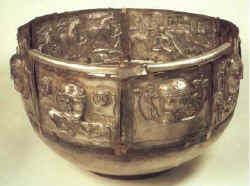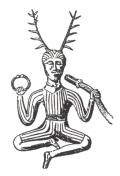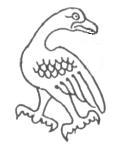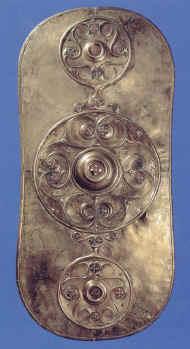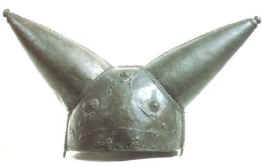|
Cernunnos |
||
|
This magnificent silver gilt cauldron
was found in a Danish peat bog in 1891 although it is thought that it
originates from the Middle Danube region, and is dated to the late 2nd
century BC. It is made of several individually embossed plates that depict various
scenes - partial or complete human forms including warriors on horseback carrying shields or swords, others blowing horns, a boy riding a
dolphin and various human and animal sacrifices. The seated figure is
thought to be the god Cernunnos, holding a torque in one hand and a
serpent in the other. While some of the designs are clearly not Celtic, many are,
the cauldron features cap-shaped helmets, torques, shield bosses and
several types of stylised animals -
bulls, boars, deer and birds.
|
||
Spirals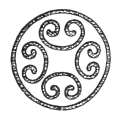 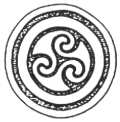 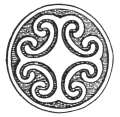 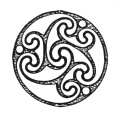 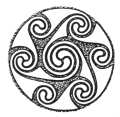 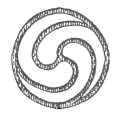 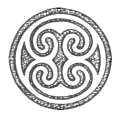 |
||
The Battersea Shield was found in the River Thames in London and was probably thrown into the water as an ceremonial offering to the gods, as several other items including other shields and decorative shield bosses, spearheads and helmets have also been found in the river. Now in the British Museum, it is 85cm long, made of copper alloy sheeting inlaid with red glass and is thought to have been fashioned sometime between the 1st century BC and the 1st century AD. Dating from around the same time, the Waterloo Helmet was similarly plucked from the River Thames, this time from beneath Waterloo bridge. Also in the British Museum, it is made of bronze inlaid with enamel and may have been intended to adorn a statue, as it is too small to be worn by an adult.. |
||
|
|
||
